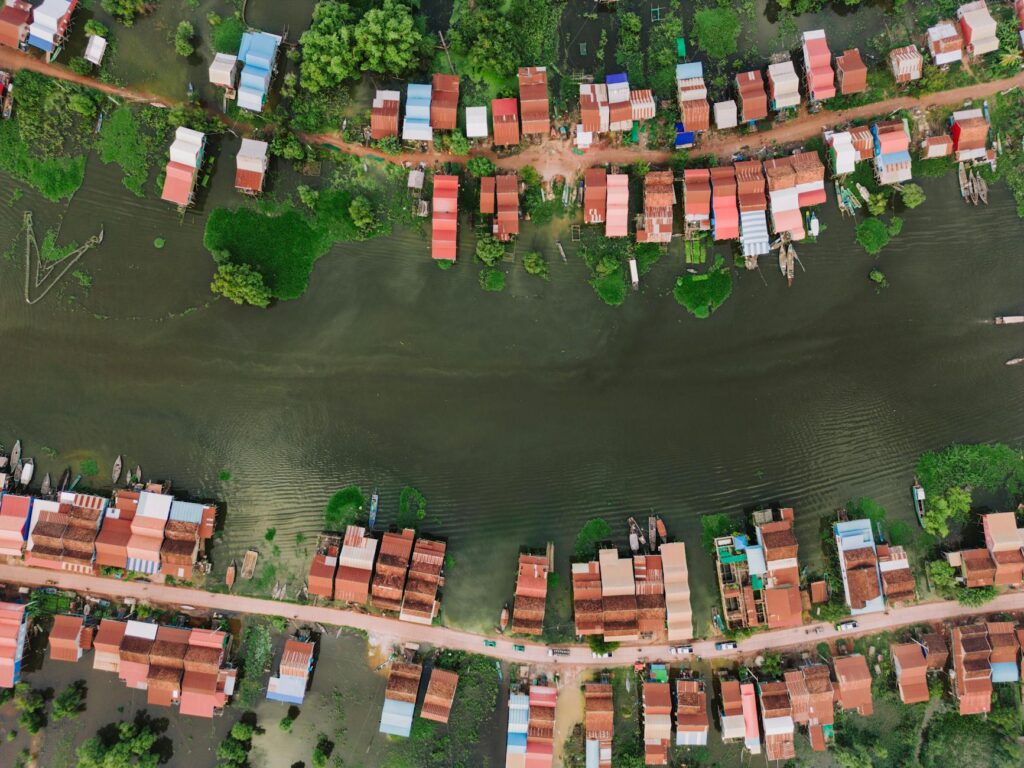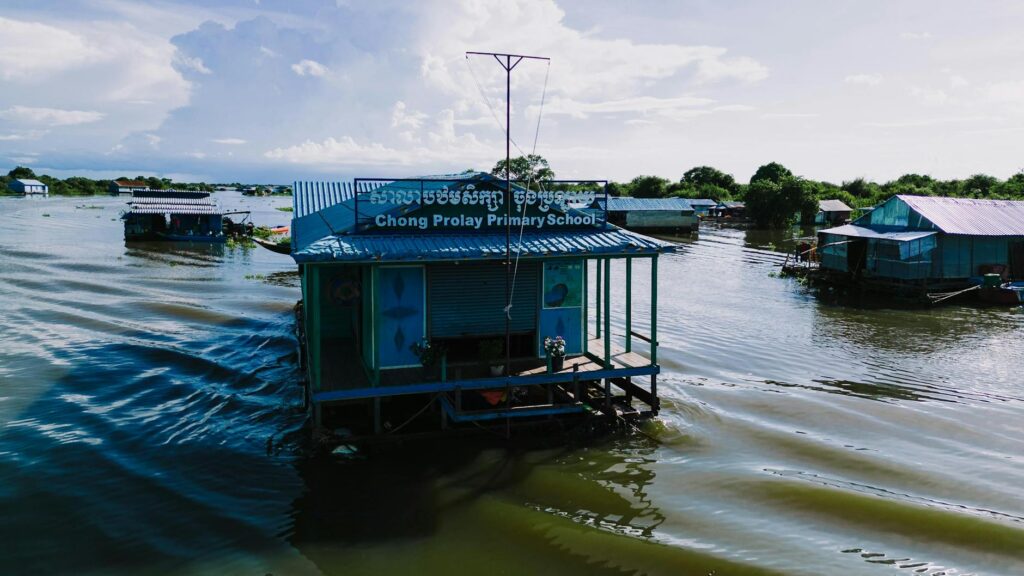Imagine a place where houses float, markets bob on water, and life unfolds on the surface of a vast lake. This isn’t a fantasy; it’s the reality of floating villages, like those found on Cambodia’s Tonle Sap Lake, a breathtaking and unique ecosystem.
Life on the Water
Tonle Sap Lake, the largest freshwater lake in Southeast Asia, is home to a unique culture adapted to the water. Floating villages are not just clusters of houses; they are thriving communities with schools, temples, and markets, all existing in harmony with the lake’s rhythms.  The stilt houses rise and fall with the water levels, a testament to the ingenuity of the people who call this place home. Read more about daily life here.
The stilt houses rise and fall with the water levels, a testament to the ingenuity of the people who call this place home. Read more about daily life here.
The Dynamic Ecosystem of Tonle Sap Lake
Tonle Sap Lake is remarkable for its annual fluctuation in size and depth. During the wet season, the Mekong River reverses its flow, flooding the surrounding plains and dramatically increasing the lake’s size.  This natural phenomenon supports an incredibly rich biodiversity, vital for both the environment and the community. Learn more about the Mekong River’s influence.
This natural phenomenon supports an incredibly rich biodiversity, vital for both the environment and the community. Learn more about the Mekong River’s influence.
The Challenges Faced by Floating Village Communities
Life in a floating village is not without its challenges. Environmental issues such as pollution from plastic waste and unsustainable fishing practices threaten the lake’s delicate ecosystem. [IMAGE_3_HERE] Additionally, climate change and its potential impact on water levels pose significant risks to the community’s well-being. These communities are striving to balance tradition with sustainable practices. Learn more about these challenges by reading WWF’s report on the Mekong.
The Culture and Traditions of the People
The people of Tonle Sap Lake have a deep connection to their unique environment and possess a rich cultural heritage that centers around their harmonious relationship with the lake. Their way of life is intricately woven into the natural rhythms of the lake. They are skilled fishers and farmers, adapting their techniques to the changing seasons. [IMAGE_4_HERE] Discover more about their traditions.
Tourism and Sustainability
In recent years, ecotourism has become an important aspect of the floating villages. Visitors can experience the unique culture and beauty of the lake while supporting the local community. However, it’s crucial for tourism to be managed responsibly to minimize its environmental impact and ensure the long-term well-being of the communities. Responsible travel is key. Check out these tips for responsible tourism before you plan your trip.
The Future of Floating Villages
The future of these fascinating communities relies on a balance between preserving their traditional way of life and adapting to the challenges presented by environmental changes and economic development. Sustainable practices, community empowerment, and responsible tourism are essential for ensuring the long-term survival and prosperity of the floating villages of Tonle Sap Lake. For more information on conservation efforts, please visit UNESCO’s Tonle Sap Biosphere Reserve website. We must work together to preserve this unique part of the world.
Frequently Asked Questions
What is the best time to visit Tonle Sap Lake? The dry season (November to April) offers the best weather for visiting. However, the lake’s size and character change dramatically between the wet and dry seasons, making each time of year unique.
How can I help support the floating village communities? Consider booking tours through responsible operators, avoiding single-use plastics, and supporting local businesses when visiting. Donations to organizations working on conservation efforts in the area are also a great help.
Are floating villages only found on Tonle Sap Lake? No, similar communities exist around the world in various aquatic environments, though each has its own unique character.
What are the main threats to the lake’s ecosystem? Pollution, unsustainable fishing practices, deforestation, and the effects of climate change are all serious threats.
What kind of wildlife can you see on Tonle Sap Lake? You can spot numerous species of birds, fish (including the giant Mekong catfish), reptiles, and mammals.

